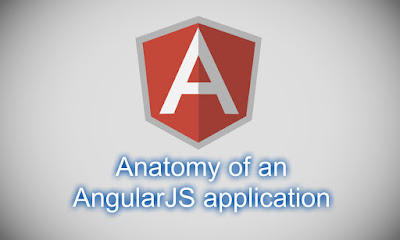What are The Application Components with AngularJS?
This post is about independent business segments with AngularJS that can be instantiated at discretionary places in a single's application.
With AnuglarJS, one composes the HTML evidently and after that executes conduct in JavaScript by means of controllers and mandates. The controllers are about the model of which the HTML is the view, while mandates are about additional labels and properties that you can expand the HTML with. You should execute business rationale in controllers and UI rationale in orders. Great. In any case, there are circumstances where the qualification isn't so obvious, specifically when you are building a UI by reusing business usefulness in numerous spots. Read More Info On Angularjs Online Training
In a substantial application, it regularly happens that a similar bit of usefulness must be accessible in various settings, in various streams of the client association. So it can without much of a stretch bundle that usefulness and fitting it at whatever point it's required. For instance, a specific area protest ought to be editable setup, or we require the capacity to choose among a rundown of progressively produced space objects. Those kinds of segments are application parts since they embody reusable business rationale and they are even fixing to an explicit backend, instead of, say, UI segments which are to be (re)used in various applications and have a lot more extensive pertinence. Since application parts are not instantiated that regularly (instead of UI segments which are substantially more widespread), it is every now and again enticing to copy&paste code as opposed to making a reusable programming element. Except if the componentization is extremely simple and requires no additional work. Get More Info On Angularjs Online Course
On the off chance that you are utilizing AngularJS, here is an approach to effortlessly accomplish this kind of exemplification:
Put the HTML in a record as an independent format "fractional" (i.e. without the best dimension record HTML labels).
Have its controller JavaScript be some way or another incorporated into the principle HTML page.
Fitting it in some other piece of the application, like other HTML formats for instance.
This last part is impossible with AngularJS's API. We need to write to sticking code. Since we will plug by alluding to our segment in an HTML format, we need to compose a custom mandate. Rather than composing a different mandate for every part as AngularJS documentation suggests, we will keep in touch with one order that will deal with every one of our segments. Undoubtedly, there is the conventional mandate to incorporate HTML partials in AngularJS, the ng-see order, however, it's restricted to swapping the primary substance of a page, excessively coarse-grained that is. On the other hand, our mandate can be utilized anyplace, settled recursively and so on. Angularjs Online Training Hyderabad
good. Presently, how about we take a gander at the essence of the order, its connection strategy. (I'm certain there is some substantial reason that strategy is named "interface". Maybe in light of the fact that we are "connecting" an HTML layout to its containing component. Or then again to a model by means of the degree? Something to that effect.) For any situation, that is were DOM control is finished. So this is what's going on in our execution:
We bring the HTML layout from the server. By naming tradition, we anticipate that the record will have expansion .ht. Whatever is left of the general way of the format record is given in the name trait.
When the layout is stacked, we set it as the HTML substance of the mandate's component. So the subsequent DOM will have a be-plug DOMnode which the program will cheerfully disregard and inside that hub, there will be our part's HTML layout.
At that point, we "accumulate" the HTML content utilizing AngularJS's $compile benefit. This strategy call is basically the general purpose of the activity. This is the thing that permits AngularJS to tie model to see, to process any settled orders recursively and so on. So, this is the thing that makes our literary substance incorporation into a "runtime part case". Indeed, this and furthermore the accompanying: More Points On Angularjs Online Course Bangalore
...the authoritative of degree properties between our encasing component and the segment we are including. This coupling is accomplished in the accompanying for the circle by watching variable changes in the extents of intrigue.
That last point needs more clarifying. The HTML code that incorporates our segment probably has some related model extension with ascribes relating to the business rationale. Then again, the included part gains its own extension with its very own arrangement of qualities as characterized by its own controller. The two degrees wind up in a parent-tyke association with the order's extension (a third one) in the middle. From an application perspective, we most likely have one or a few fastened parent scopes holding pertinent model credits and we'd need to by one way or another interface the information in our part model to the information in the encasing degree. In the precedent above, we are associating the shippingAddress trait of our principle application degree to the currentSelection property of the location determination part. With regards to the encasing rationale, we are managing a "shipping address", yet with regards to the location determination part which essentially shows a selection of addresses to pick from we are managing a "present choice". So we are restricting the two generally free ideas. Get More Info On Angularjs Online Training Bangalore




Comments
Post a Comment